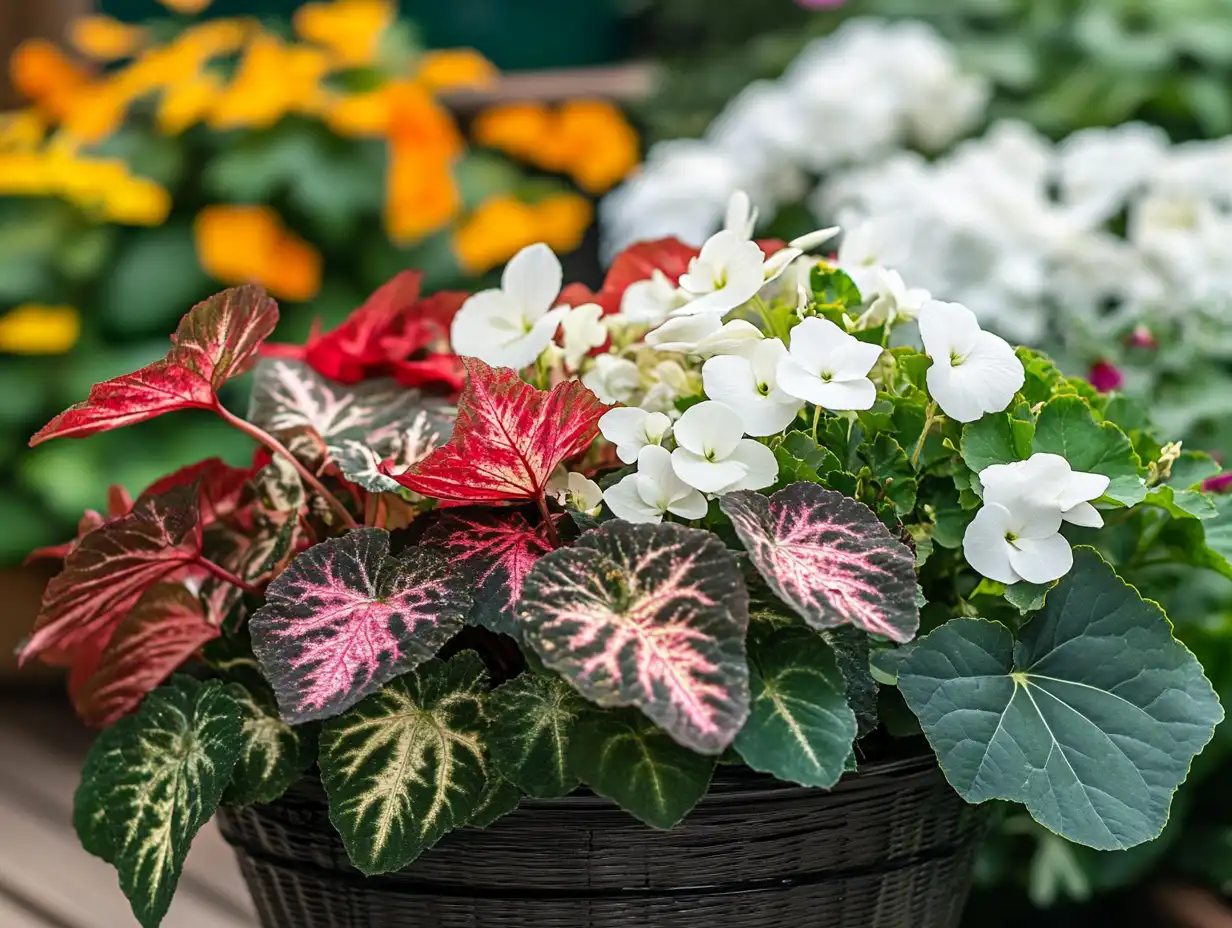When it comes to adding instant charm to patios, porches, or balconies, coleus in a container is a go-to favorite among gardeners. Known for its vividly colored leaves—ranging from deep burgundy to lime green—coleus makes a striking statement in even the smallest of spaces. Even better? It’s incredibly easy to grow and thrives in partial shade, making it ideal for bright indoor corners or shaded outdoor areas.
But beyond its aesthetic appeal, coleus brings even more to the table when paired with the right companion plants. Thoughtful container plant combinations can transform a simple coleus pot into a thriving mini-ecosystem—boosting growth, repelling pests, and enriching the visual appeal of your garden setup.
Whether you’re planning a shaded balcony planter or looking to refresh your front porch landscaping, knowing what to plant alongside coleus can help you maximize both biodiversity and beauty. Just remember—while coleus is stunning, it’s also toxic to pets and people if ingested, so mindful placement is key.
In this guide, you’ll explore why companion planting is a game-changer for small-space gardeners, discover which plants pair best with coleus, and learn how to design combinations that are just as practical as they are picture-perfect.
Table of Contents
🌿 Benefits of Growing Coleus in a Container
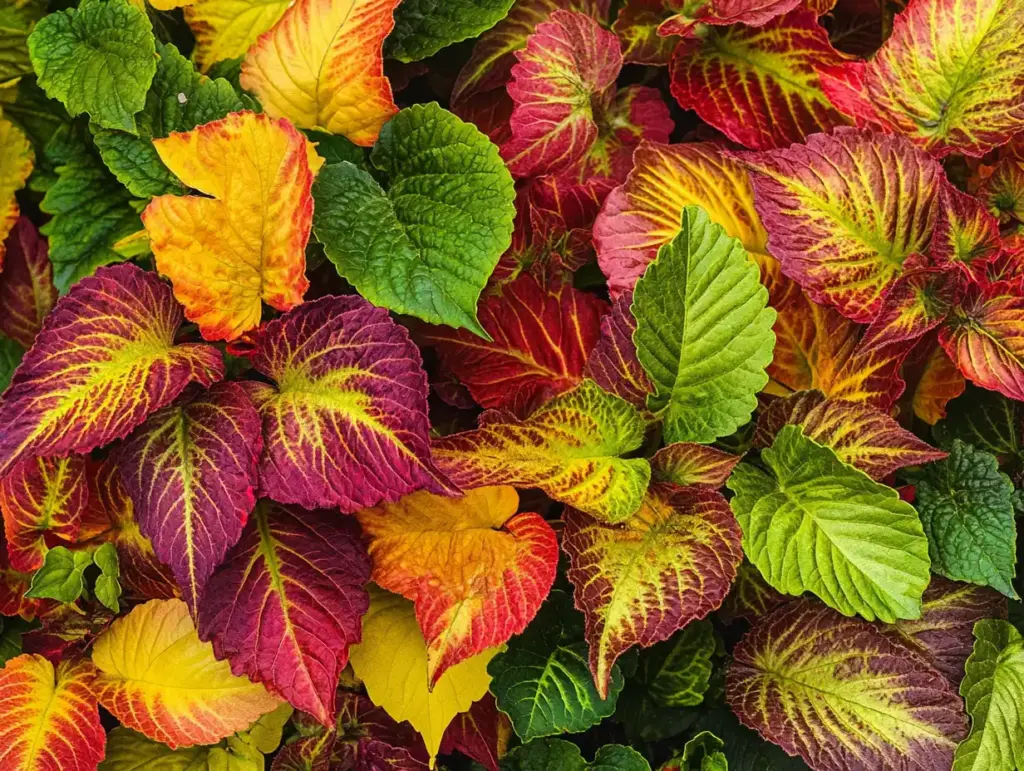
Before diving into ideal plant pairings, it’s worth understanding why coleus in a container is such a beloved choice among home gardeners. Beyond its unmistakable beauty, coleus offers a host of practical benefits that make it a perfect candidate for container gardening.
🌈 Striking, Colorful Foliage
Coleus is renowned for its vibrant leaves, which often outshine flowers in terms of visual impact. From electric lime to velvety purples, the variety of color combinations makes it easy to match or contrast with other container plants. This constant color—even without blooms—keeps your containers lively all season long.
🌤️ Low Maintenance and Shade-Friendly
One of coleus’ best traits is its adaptability. It prefers partial to full shade and doesn’t require constant sunlight to flourish, making it a reliable option for covered patios, shaded balconies, or bright indoor spaces. Regular watering and well-draining soil are generally all it needs.
🪴 Versatile Growing Options
Whether you’re working with window boxes, hanging baskets, or ceramic pots, coleus fits right in. It can be used as a filler, thriller, or even a soft spiller depending on the variety. Its upright or cascading growth habits lend themselves well to creative container combinations.
☀️ Heat Tolerant and Resilient
In warm climates, coleus holds up well through the summer heat, especially in shaded areas where other plants may wilt. This heat tolerance makes it a dependable addition to your warm-weather container displays.
🌬️ Air-Purifying Potential
While research is ongoing, some indoor gardeners believe coleus helps freshen indoor air. Whether or not it’s a top-tier air purifier, its presence certainly adds life and vibrancy to indoor environments.
With all these advantages, it’s no wonder coleus is a popular anchor in many mixed containers. The next step? Choosing the right plants to grow alongside it for the healthiest, most visually pleasing results.
🌼 Why Companion Planting Is Smart for Container Gardens
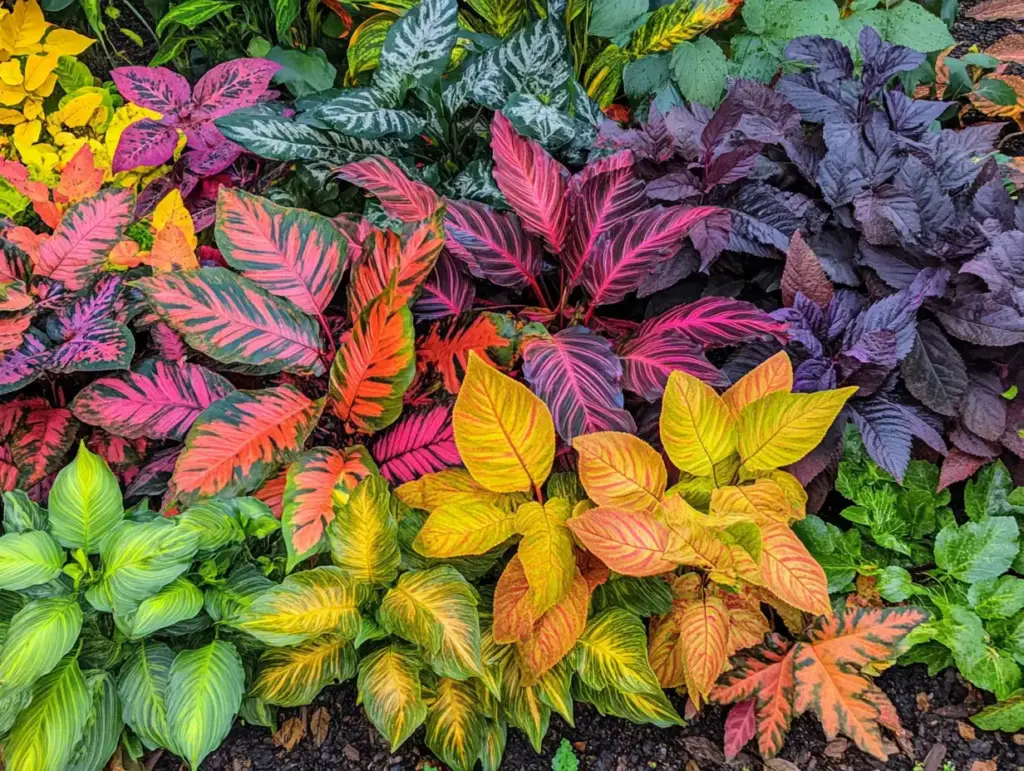
While coleus in a container already brings color and structure to any space, pairing it with the right companion plants can take your container garden from good to exceptional. Companion planting is more than a design trend—it’s a proven method to create thriving, self-supporting plant ecosystems, especially in limited spaces.
🐛 Natural Pest Control
Some plants naturally repel harmful insects or attract beneficial predators that keep pest populations in check. When paired wisely, your coleus can be protected by nearby plants that deter aphids, mites, or whiteflies—without the need for synthetic sprays.
🌱 Soil Enrichment and Moisture Retention
Companion plants can work together to improve soil health, especially in confined environments like pots. For example, some plants help fix nitrogen in the soil or provide shade that keeps moisture from evaporating too quickly—both of which benefit coleus and its companions.
🌿 Enhanced Growth and Yield
By choosing plants that don’t compete for the same nutrients, space, or light, you allow each to grow more vigorously. Certain combinations also create microclimates that shield tender plants (like coleus) from wind, heat, or excess sun.
🚫 Less Need for Chemicals
The natural pest resistance and soil health benefits of companion planting often eliminate or greatly reduce the need for chemical fertilizers and pesticides. This makes your container garden more eco-friendly and safer for pets and children—especially important given coleus’ own toxicity.
🌼 More Biodiversity, More Beauty
Beyond function, companion planting increases visual interest. Mixing textures, heights, and bloom times creates dynamic containers that look lush and feel more like miniature gardens than single-plant pots. Biodiversity also promotes a healthier, more balanced mini-ecosystem.
In a nutshell, companion planting isn’t just for vegetable beds. It’s a highly effective and aesthetically rewarding practice that fits beautifully into container gardening—especially when coleus in a container is the star of the show.
🪴 Top Companion Plants to Grow with Coleus in a Container
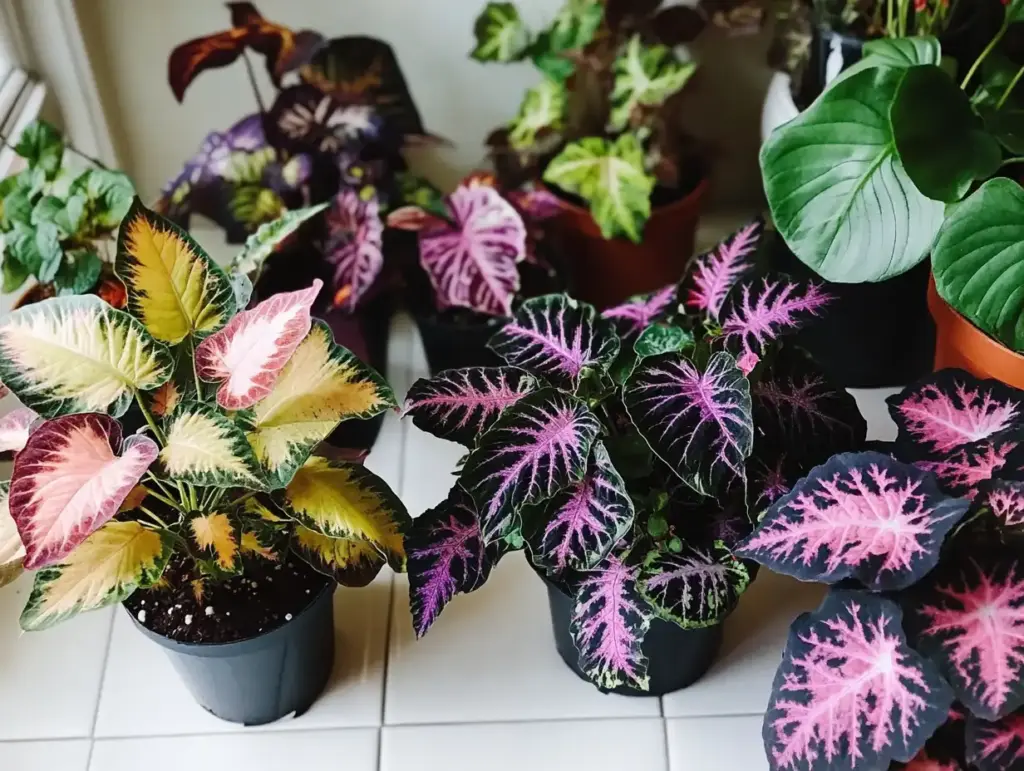
Choosing the right companions for coleus in a container involves more than just visual appeal—it’s about finding plants with similar light, water, and space needs. The following selections thrive under the same conditions as coleus, enhancing your container garden both functionally and aesthetically.
🌸 Impatiens
Why it works:
- Shares coleus’ love for shade and moisture
- Offers a wide range of bright flower colors
- Softens the foliage-heavy look of coleus with delicate blooms
Impatiens are the ultimate flower to pair with coleus. They not only mirror its growing preferences but also add a layer of floral interest without overwhelming the vibrant leaves. Together, they create a balanced, textured look perfect for shady patios or porch containers.
🌼 Calibrachoa
Why it works:
- Compact, trailing flowers add contrast
- Performs well in partial shade
- Great for hanging baskets or tall pots
Often called “Million Bells,” calibrachoa adds a cheerful burst of color. Their small, petunia-like flowers complement coleus’ bold leaves while spilling gently over the sides of containers, enhancing dimension and drawing the eye downward.
🌺 Begonias
Why it works:
- Shade-tolerant and moisture-loving
- Available in both upright and trailing forms
- Foliage variety adds interest next to coleus
With their waxy leaves and delicate blooms, begonias are another top-tier companion. Choose from upright begonias for structural interest or trailing varieties to fill out the lower levels of your planter. Their rounded leaves create a pleasing contrast with the sharper lines of coleus foliage.
🍠 Sweet Potato Vine
Why it works:
- Lush, trailing habit adds drama
- Thrives in similar conditions
- Broad leaves provide rich visual contrast
If you’re aiming for a bold, tropical vibe, sweet potato vine is a show-stopper. Its trailing vines and heart-shaped leaves create a dynamic container layout, complementing the upright growth of coleus with a cascading effect that softens edges and adds volume.
🌿 Ferns
Why it works:
- Thrive in shade and high humidity
- Soft, feathery fronds contrast with coleus leaves
- Ideal filler for bare spots in large containers
Ferns bring elegance and texture. Their finely divided leaves offer a lovely foil to the bold blocks of color that coleus provides. Together, they give your container garden a woodland charm that feels serene and naturally balanced.
Each of these companions enhances the beauty of coleus in a container while sharing its environmental preferences, making care simple and design seamless.
⚠️ Companion Planting Tips and Cautions
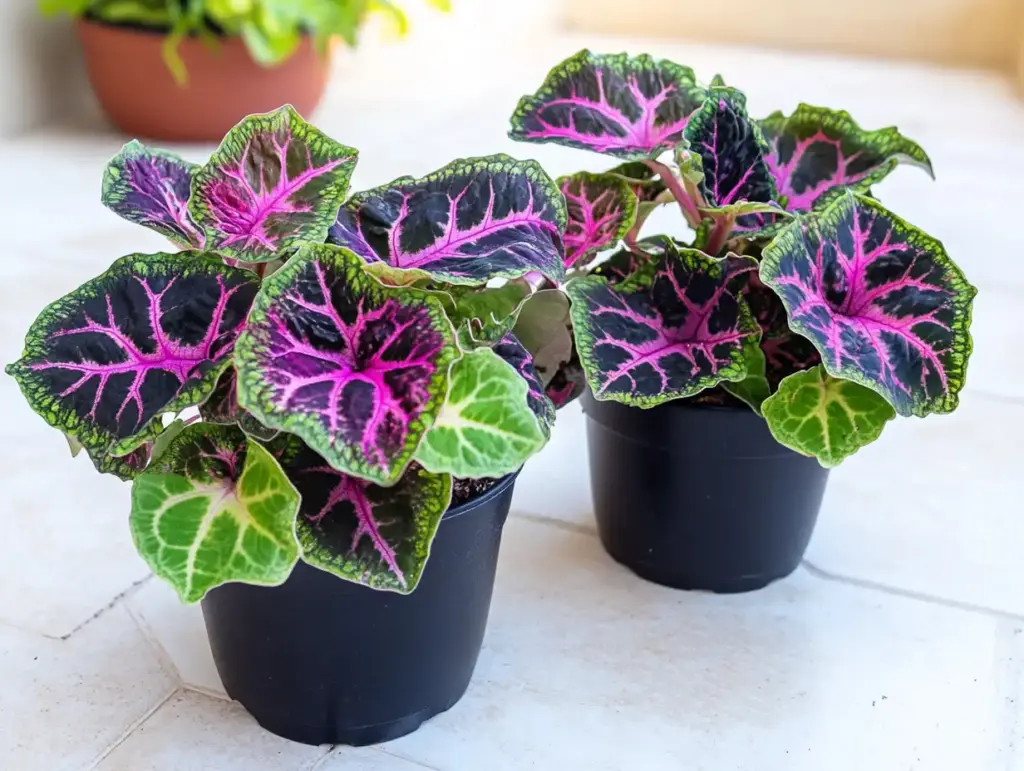
Pairing plants in a small container garden requires more than just good looks. To ensure your coleus in a container thrives alongside its companions, keep these essential guidelines in mind. The goal is to create a balanced mini-garden where all plants can flourish without conflict.
☀️ Match Growing Conditions
Before combining plants, make sure their light, water, and soil preferences align. Coleus prefers partial shade and moist, well-drained soil—so companions should thrive under similar conditions. Pairing it with sun-loving or drought-tolerant plants will lead to stress and stunted growth.
🌱 Avoid Overcrowding
While it’s tempting to fill every inch of your container, plants need space to breathe and grow. Overcrowding leads to competition for nutrients, water, and sunlight, and can increase the risk of disease. Always consider the mature size of each plant and plan your layout accordingly.
⚠️ Watch for Invasive Behavior
Some trailing or fast-growing plants, like aggressive vines, can quickly take over a container and smother slower-growing species like coleus. Regular pruning and thoughtful spacing help keep all your plants in harmony.
💥 Be Mindful of Allelopathy
Allelopathy is when a plant releases chemicals that inhibit the growth of nearby plants. While rare in container gardening, it’s worth researching any new companion plants to make sure they won’t disrupt coleus’ growth or vice versa.
🌀 Align Seasonal Cycles
Choose plants with similar growing seasons and lifecycles so your container garden maintains its beauty over time. A mismatch (like pairing a summer bloomer with a cool-season annual) can result in awkward gaps or fading displays.
🧪 Consider Chemical Sensitivities
Some organic or chemical treatments, like insecticidal soaps or fungicides, may be safe for coleus but harmful to its companions—or vice versa. Test sprays on a small area first or apply treatments early in the day when plants are less stressed.
With careful attention to compatibility and care, companion planting can enhance the visual appeal and health of your coleus in a container—creating a vibrant, easy-to-maintain mini-garden that thrives all season long.
❓ Frequently Asked Questions
1. What grows well with coleus in a container?
Coleus pairs beautifully with shade-loving plants like impatiens, begonias, calibrachoa, sweet potato vine, and ferns. These companions share similar light and water needs, making them perfect partners in a container setting.
2. Can I grow coleus in a container indoors?
Yes! Coleus in a container can thrive indoors, especially near a bright window that provides indirect light. Just be sure to keep the soil consistently moist and rotate the pot occasionally to promote even growth.
3. Does coleus need full sun or shade?
Coleus prefers partial to full shade. Too much direct sunlight can fade its vibrant leaf colors or cause leaf burn. That’s why coleus in a container does best in shaded patios, covered porches, or indoor spaces with filtered light.
4. Are coleus plants toxic to pets?
Yes, coleus is toxic to cats, dogs, and even humans if ingested. When growing coleus in a container, it’s best to place the pot out of reach of pets and small children to avoid accidental contact or consumption.
5. How do I maintain healthy coleus in a container?
Ensure your coleus in a container has well-draining soil, receives regular water (without waterlogging), and is pinched back regularly to encourage bushy growth. Avoid overcrowding it with companions to prevent competition for nutrients and light.
6. Can I plant coleus with vegetables or herbs?
While it’s possible, it’s generally better to pair coleus in a container with ornamental plants due to differing growth habits and care needs. However, if you choose herbs, stick with shade-tolerant ones like mint or chives, and always check for compatibility.
✅ Conclusion
Creating a thriving, visually stunning coleus in a container garden is all about thoughtful pairing. While coleus dazzles with its vibrant foliage and low-maintenance care, combining it with compatible companions like impatiens, begonias, or even a lush sweet potato vine adds depth, diversity, and long-lasting resilience to your setup.
By carefully matching light, water, and growth needs, you can create a container garden that not only looks stunning but also functions as a balanced, self-sustaining ecosystem. Whether you’re brightening up a sunny balcony or styling a shaded porch, companion planting with coleus unlocks new levels of creativity, sustainability, and gardening success—even in tight spaces.
So grab your favorite planter, select your companions with care, and watch your coleus arrangement come alive with bold color, rich texture, and vibrant health.

